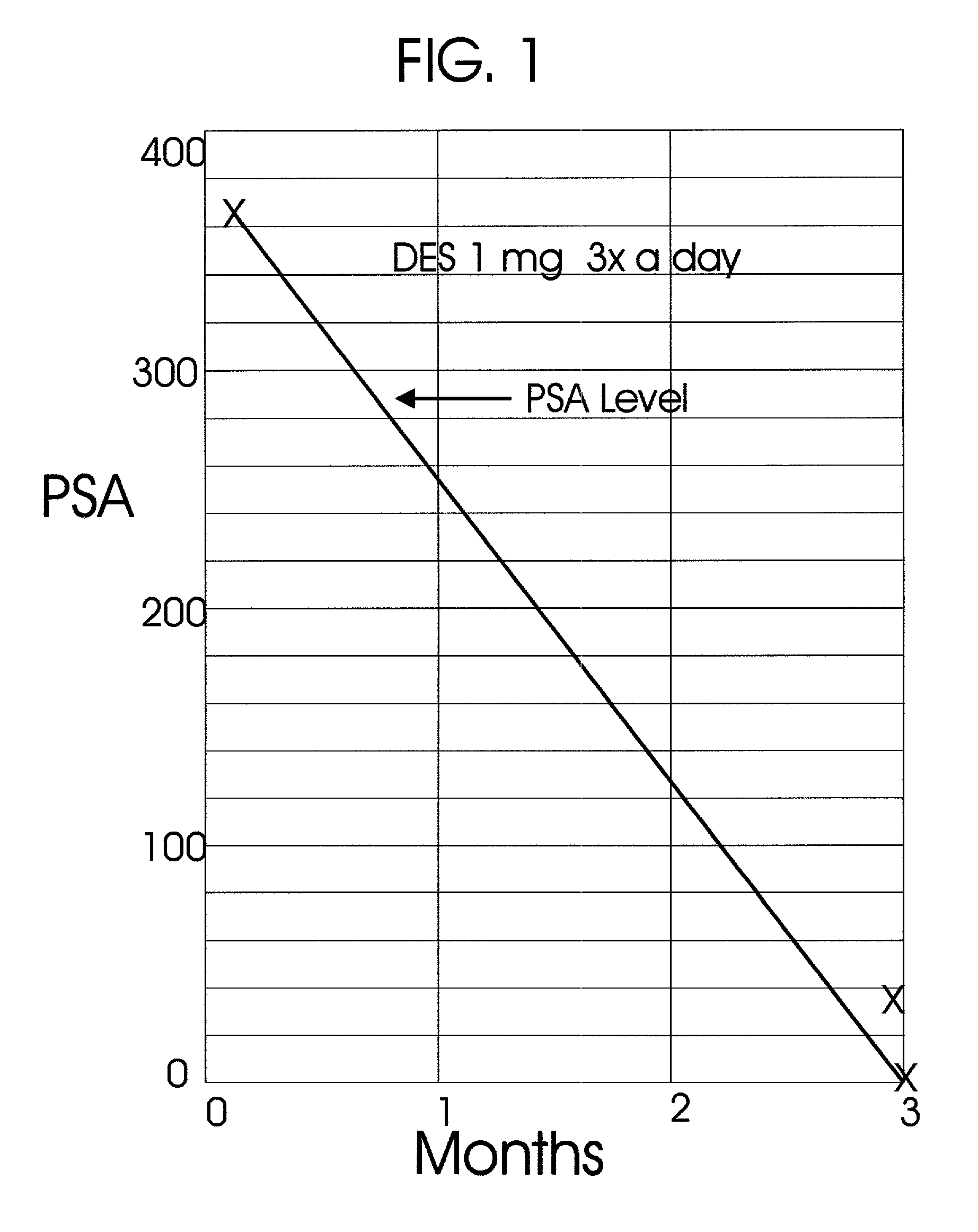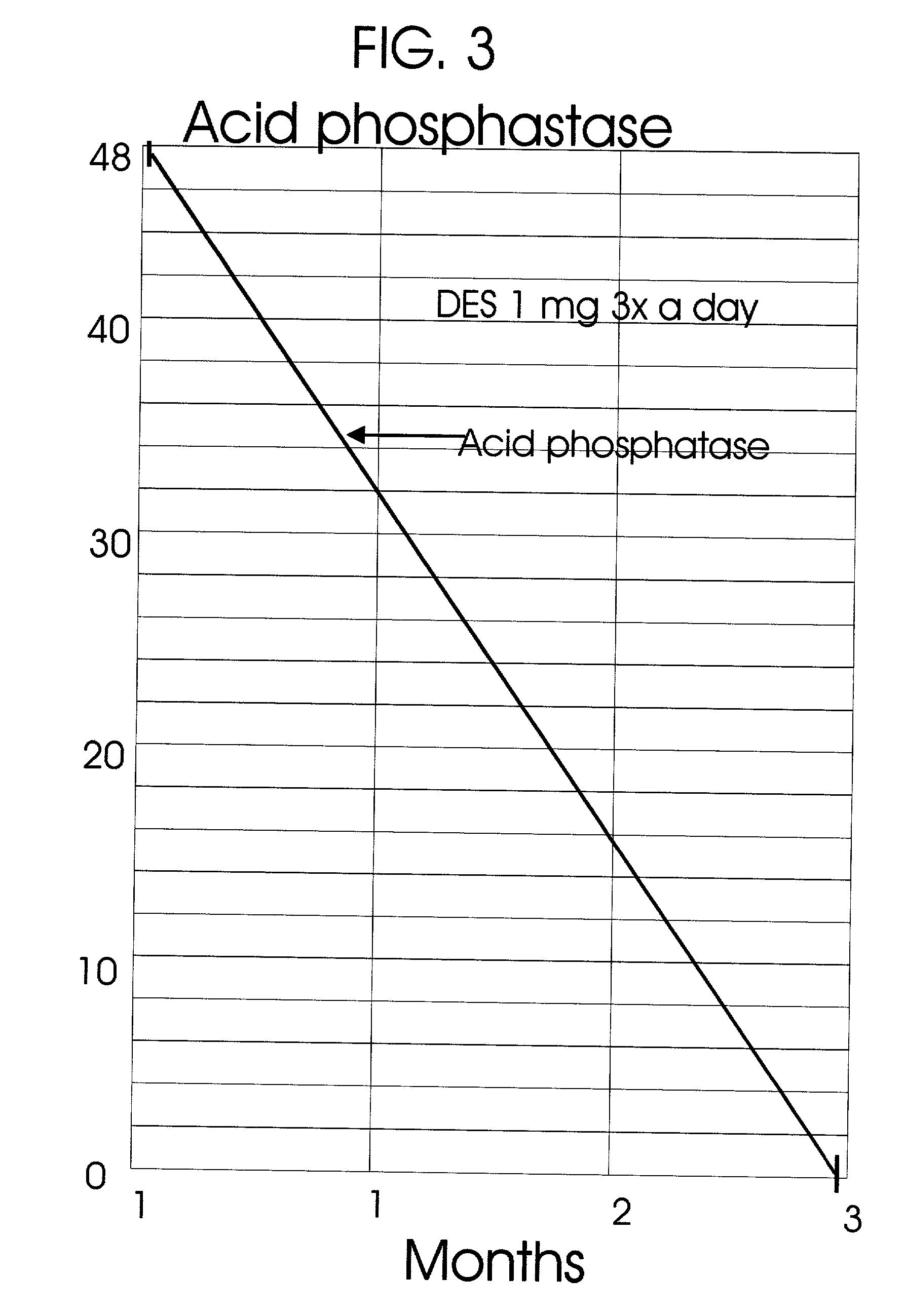A great percentage of the systemically administered hormone is rapidly metabolized and eliminated from the body and hence it is wasted.
It increases the undesirable side effects of hormone treatment making it unsafe for some patients.
Daily
systemic administration of the hormones also adds to the cost of these medications and hence unaffordable to some patients.
Because of the very low concentration of the systemically administrated hormone reaching the
cancer cells, it may not even be adequately effective in some patients.
Furthermore, the androgen deprivation might cause cancer cells to differentiate into a
phenotype that is less malignant and to programmed,
apoptotic cell death.
There is no
consensus on the best form of treatment for early stage prostate cancer.
For early stage prostate cancer, many forms of treatments are available; however there is no
consensus on the best form of such treatment.
The cytotoxic effects of radiation to the prostate would remove or diminish the available
androgen receptor sites and hence the androgen
suppression treatment of early stage prostate cancer after radiation would not be as effective as when treatment is given before radiation.
However presently, the androgen suppressive treatment alone is not an elective routine treatment for early stage prostate cancer.
The conservative management of early stage T0-T2 prostate cancer by androgen
suppression treatment alone will not eliminate all the focus of tumor.
A valid criticism against such biochemical
tumor control by combined radiation and androgen suppressive treatment is that the androgen suppression alone would bring the serum PSA level to normal.
In addition to the higher cost of LHRH analogues, like the anti-androgens, it has numerous side effects.
Like the very high cost LHRH analogues, the very low-cost estrogens can also block the hypothalamic LHRH
secretion, which in turn blocks the pituitary LH and FSH
secretion resulting in the diminished and or no synthesis of testicular androgens.
Because of the tonicities associated with the treatments of prostate cancer with such
estrogen and its
synthetic derivatives, they are no more used to treat the prostate cancer.
The preparations of the LHRH analogues, the leuprolide and the
goserelin are very expensive.
However, because of the side effects of systemically administered estrogens, it is not commonly used.
Injections of
pellets of hormones for
hormone replacement treatment after oophorectomy result in large variations in serum hormone levels with high levels immediately after such injections.
They do not teach the treatment of prostate cancer either by subcutaneous or intramuscular injections or by direct prostate implants of those encapsulated and or microspheres preparations of hormones.
Furthermore, the hormonal compositions of the
implant preparations of U.S. Pat. No. 5,430,585 (36; Pike M and Spicer D V: Methods and formulations for use in treating benign gynecological disorders; U.S. Pat. Nos. 5,340,585; 1994) and 5,430,856 (34; Pike M and Spicer D V: Methods and formulations for use in treating oophorectomized women, U.S. Pat. No. 5,340,586; 1994) containing androgen are not suitable for the androgen suppressive treatment of prostate cancer.
Hence its composition is not suitable for the treatment of prostate cancer.
Furthermore, such direct implants of DES, anti-androgens and cytotoxic compounds are much more cost effective.
However such treatment has many proponents and critics.
In U.S. Pat. No. 6,248,057 (40; Mavity W G,
Stern R A, Osaki S, and Zamora P O: Absorbable
brachytherapy and
chemotherapy delivery devices and methods; U.S. Pat. No. 6,248,057; 2001) such encapsulations are thought to be a
disadvantage.
It is said that these implants would cause difficulties in future diagnostic interventions; however such difficulties are very seldom in clinical practice.
It also brings significant dosemetric difficulties.
This will cause significant dosimetric difficulties.
When such long-lived isotopes are used for local radiation and it is combined with long periods of localized
chemotherapy, it can cause numerous complications including local
carcinogenesis itself.
If
iodine-125 bioabsorbable implants were made to absorb earlier, its systemic
toxicity would be prohibitive because of the high radioactivity released systemically.
If a significant portion of this dose were released into the circulation from
biodegradation of radioactive implants, it would be a very
toxic dose.
It is not suitable for hormonal treatment of cancer, particularly for the prostate cancer.
Furthermore if the usual I-125 implant
radiation dose of 160 Gy were attempted with bioabsorbable implants of U.S. Pat. No. 6,248,057 (40; Mavity W G,
Stern R A, Osaki S, and Zamora P O: Absorbable
brachytherapy and
chemotherapy delivery devices and methods; U.S. Pat. No. 6,248,057; 2001), then in 90 days of its maximum persistence, the radioactivity released from its biodegradation would severely harm the patient.
Together with radiation, such local tissue reaction can be even more severe.
However, the biochemical tumor control alone is not an indication of absolute tumor control for poor prognostic recurrent prostate cancer.
However, the biochemical tumor control alone is not an indication of absolute tumor control for poor prognostic recurrent prostate cancer.
Therefore, much larger doses of these compounds are taken daily or very frequently to insure the delivery of the required dose to the prostate, which increases its systemic
toxicity and the cost.
Therefore, much larger doses of these compounds are taken daily or very frequently to insure the delivery of the required dose to the prostate, which increases its systemic toxicity and the cost.
 Login to View More
Login to View More  Login to View More
Login to View More 


